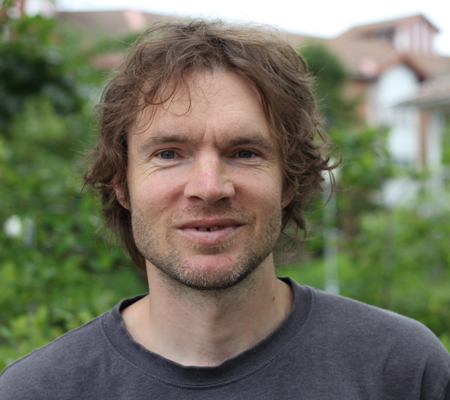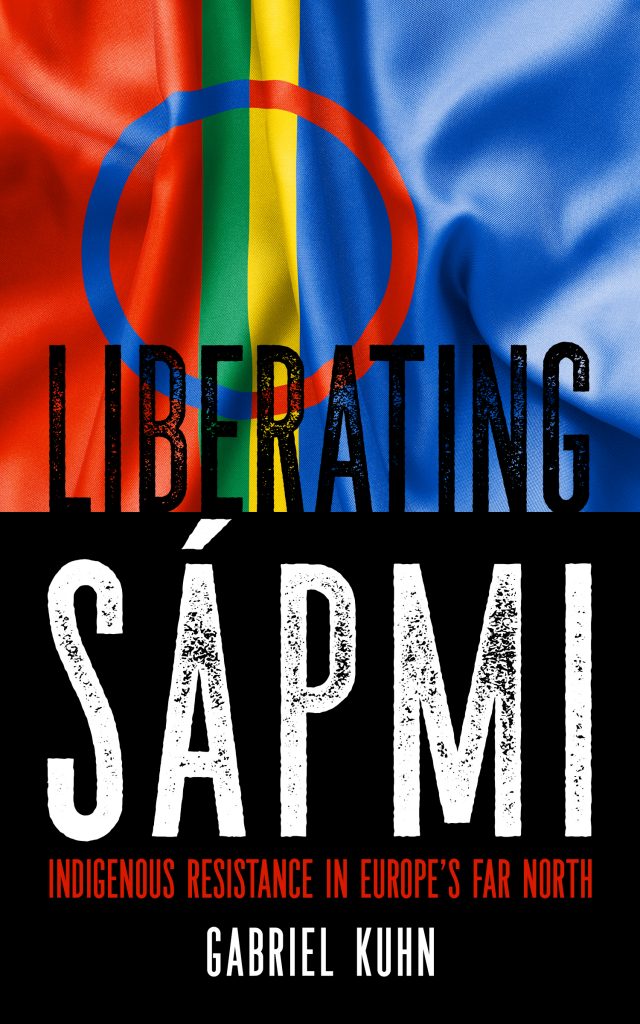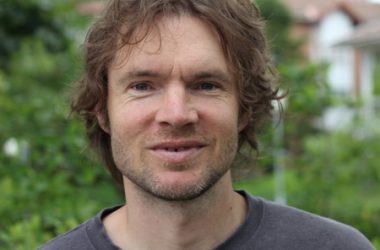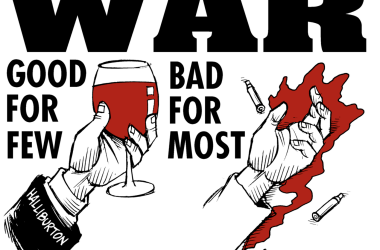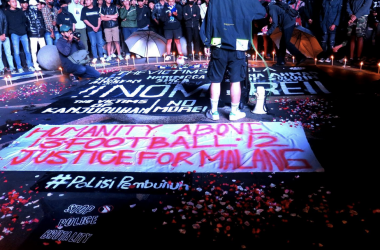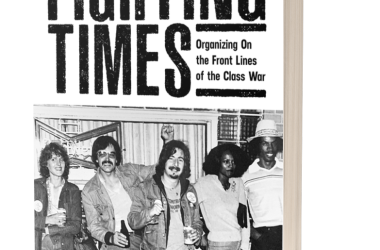By Gabriel Kuhn
Originally posted on LeftTwoThree
January 2nd, 2021
A joint review of Corona, Climate, Chronic Emergency: War Communism in the Twenty-First Century (Verso, 2020) and How to Blow up a Pipeline (Verso, 2021) by Andreas Malm.
Andreas Malm first received wider recognition for his 2016 book Fossil Capital: The Rise of Steam Power and the Roots of Global Warming. Since then, he has established himself as an important voice in the field of “ecological Marxism”. In 2020, Malm found the time to work on several books. Here, I will review two of them, connected by their focus on radical environmentalist practice: Corona, Climate, Chronic Emergency: War Communism in the Twenty-First Century and How to Blow up a Pipeline. It appears that Malm wrote Pipeline before CCC, yet the books were released in the opposite order. I assume the publisher wanted to be on top of the Covid crisis. Fair enough.
The books read well and are devoid of academic jargon. Notes are discreetly added after the main text with references to page numbers rather than inserted numerals. The contents are engaging for anyone interested in radical change – although (sorry, early giveaway) I think Corona, Climate, Chronic Emergency is the much better offering of the two.
Malm was certainly taking a risk with it. He must have known that much of what was being written about Covid-19 in April 2020 would seem terribly outdated only a few months later. However, Malm (I assume, consciously) doesn’t write much about Covid-19 as such. Rather, he looks at the virus in the context of a sick planet, avoiding to get trapped in the confines of the moment. Corona, Climate, Chronic Emergency is part Virology 101, part climate crisis primer, part bare-bones critique of capitalism. On occasion, Malm seems to overstress his points, for example by suggesting that marsupials, camels, and pythons are regular features in the meat halls of Sweden. Living in Sweden myself, I haven’t come across them much. Then again, I usually don’t frequent the meat halls, so who knows?
Radically inclined readers who don’t consider the climate crisis a side issue (are there any left?) will agree with most of Malm’s analysis. It’s the third and final chapter of Corona, Climate, Chronic Emergency where things get juicy: “War Communism”. Now, that’s different! The overexcited might be disappointed that the chapter is off to a rather slow start. The first ten pages won’t be too gripping for those unfamiliar with the writings of James O’Connor or the labor theory of value. At the latest, however, things get moving with two “brief obituaries” for social democracy and anarchism, respectively. I’m not much of a social democrat, so I take little issue with Malm’s assertion that “the time for gradualism is over”. I took more interest in Malm’s takedown of anarchism.
Anarchism, Movementism, and Hard Power
I believe that anyone who would care to look at the writing I have done on anarchism would find it very difficult to accuse me of romanticizing a political tradition riddled with problems (see, for example, “Revolution Is More Than a Word”). However, Malm is making it too easy for himself. It is incorrect to claim that the “alpha and omega of anarchism [is that] the state is the problem, statelessness the solution”. Yes, anarchists envision a stateless society, but so do Marxists. It is true that there are anarchists whose politics consist of little more than a negative fetishization of the state, but they aren’t representative of the movement as a whole. In a 2010 conversation with the late historian Howard Zinn, Noam Chomsky, without doubt the world’s most renowned anarchist, stated that “among the various kinds of oppressive institutions that exist, the state is among the least of them”. For anarchists like Chomsky (and there are many), the main target is not the state per se but oppressive power structures. According to Chomsky, “as long as society is largely dominated by private tyrannies, which is the worst form of oppression, people just need some form of self-defence – and the state provides some form of self-defence.”
To ridicule anarchist practice, Malm cites the anthropologist James C. Scott’s discomfort with traffic lights. Scott’s comments, included in the book Two Cheers for Anarchism, are silly, but, with all due respect to Scott as an accomplished scholar with anarchist sympathies, his relevance for anarchism as a political movement is close to zero. To put him at the center of a critique of anarchism is a straw man fallacy if ever there was one.
Malm’s rejection of anarchism is reminiscent of J. Moufawad-Paul’s 2014 manifesto The Communist Necessity. Malm and Moufawad-Paul seem to share a similar political biography. They embraced the anarchist-inspired “movement of movements” after Marxism had supposedly landed on the ash heap of history with the fall of the Soviet Union in 1991, only to find out a couple of decades later that the “movementist” (Moufawad-Paul) approach proved incapable of overturning the dominant power structures due a lack of analytical and organizational strength.
I, too, share that political biography, and I appreciate both authors’ contribution to having made the shortcomings of the millennial activist generation painfully clear. But neither do I believe, as Moufawad-Paul does, in the glory of the Shining Path, nor, as Andreas Malm does, in the necessity of a “war communism” relying on “hard power” and “draconian” measures to implement policies so urgent they don’t allow for popular movements, democratic decision-making processes, and council systems to grow from below.
In the eyes of Malm and Moufawad-Paul, that might make me naive, stubborn, perhaps even dogmatic. I, on the other hand, believe that they are throwing out the baby with the bathwater (the proverbial version), overreact in their realization that they’ve put their money on the wrong horse (the psychological version), or haven’t learned their lessons in dialectics (the cheeky version). The challenge lies in escaping the triangle of social democracy, anarchism, and Leninism, and moving on to something “higher” (read, other) rather than declaring two of them dead and idolizing the third.
Malm uses curious arguments for defending the authoritarian turn. With regard to the production of jambiyas in Yemen (daggers made of rhino horn, threatening the rhino population), he cites the 2017 study The Extinction Market by Vanda Felbab-Brown: “Interestingly enough, the communist government of South Yemen was far more effective in eliminating demand for rhino-horn jambiyas by eliminating the demand for all jambiyas. It banned the possession of all weapons and aggressively collected them. In 1972, the jambiya ban was thus accompanied by a massive campaign to rid the country of them, with even rich and influential families targeted and forced to sell their daggers.”
Apparently, the campaign was so successful that rhino-horn jambiya went out of fashion. I suppose this is meant to illustrate the impressive results that hard power can deliver. Yet, who denies that? Dictatorships can achieve many things that appear positive if you look at the results only. They can keep the streets clean, erase unemployment, build hospitals, raise the level of education, produce world-class athletes, and ensure advertisement-free subway cars. But it all comes with a price. And the question is: is the price worth it?
The safest country I’ve ever set foot in was Syria under the regime of “Assad the father” (Hafez). In 1997, Damascus locals assured me that I could leave my backpack at any of the city’s street corners and return hours later to pick it up untouched. Frankly, I never put the promise to the test, but it was that kind of vibe. Fine. Yet, whenever you asked someone on the streets of Damascus a question that could remotely be considered political, their eyes lit up with fear; security personnel (uniformed and “secret”) was omnipresent, and IDs were endlessly checked. So, when Malm asks (after pondering harsh government regulations in light of Covid, including, as suggested by Chinese scholars, “‘sentence to life prison’ for anyone eating wild”), “What could be said against such a tough line?”, the answer is exactly that: “The price might be too high.” And this applies to the current situation as much as to possible long-term consequences.
One might say there is a crucial difference between the 1997 Syria scenario and the examples used by Malm. There might not have been an excuse for the hard power enforced by Assad at the time. For Malm, its legitimacy seems to derive from emergency situations: war, the climate crisis, a pandemic, a rhino population facing extinction. Yet, in a world of perennial crises, when and where is there no emergency? At least one that can be subjectively construed: an outside threat, an inside threat, a human threat, a viral threat – threats are everywhere, and, according to that logic, hard power might just be the appropriate universal solution, left, right, and center.
I have already hinted at what seems to be the strongest argument for the “state-led emergency action” in the name of the climate, as advocated by Malm: there is simply no time for anything else. This is why Malm likes war metaphors and overall martial terminology. In Corona, Climate, Chronic Emergency, he demands of environmentalist movements to reach for the “most militant tactics in their arsenal”. The preface to Pipeline is titled “No More Excuses for Passivity”. Sometimes, it feels like a little too much bark, but that’s beside the point. Let us, for the sake of argument, acknowledge that there are situations where there is no time to waste on democratic sensitivities. If you’re in Alpine terrain trying to save someone buried in an avalanche, you have about fifteen minutes before the person will most likely be dead. What do you do? You follow the orders of the rescue mission’s leader and don’t mess about. And if you do mess about, your companions have every right to bring you into line without putting on silk gloves. That much is true. But are we today, as humanity, the person under the avalanche? Who makes up the rescue mission? Who is leading it? And, perhaps most importantly, who sees to it that the leaders lose their authority when the rescue mission is over?
Malm brushes off the concern that “state-led emergency action is always bound to derail into totalitarianism” in a somewhat cryptic ode to “anti-Stalinist Leninism” (is there a “Stalinist Leninism”?) that ends in the simple suggestion that there is no harm in trying again. It’s a little confusing, since Malm, apart from declaring that “the time has come to … experiment with ecological Leninism”, also declares: “There is no reason not to experiment with ecological Luxemburgism, or ecological Blanquism, or Guevarism, or indeed Trotskyism.” Are we free to choose? Is it all one and the same? Or perhaps anything goes, as long as it’s not ecological anarchism?
Speaking of which: let us return to anarchism one more time. With all the fun that can be poked at its lack of theoretical depth and the clownish character of some of its currents, anarchists have raised concerns about Leninism derailing into totalitarianism early enough to question the tale that it all just went awry with the Stalinist distortion. In 1921, “Four Moscow Anarchists” (whose identity is still uncertain) wrote, in a report titled “The Russian Revolution and the Communist Party”, the following: “The road of Bolshevism leads to the formation of a social régime with new class antagonisms and class distinctions; it leads to State capitalism, which only the blind fanatic can consider as a transition stage toward a free society in which all class differences are abolished. … Its consistent economic and political centralization, its governmentalization and bureaucratization of every sphere of human activity and effort, its inevitable militarization and degradation of the human spirit mechanically destroy every germ of new life and extinguish the stimuli of creative, constructive work.” As long as it is not clear how future Leninism of any stripe – anti-Stalinist, ecological, whatever – will be able to avoid these pitfalls, I really don’t find it terribly reassuring to suggest that, well, somehow it’ll turn out alright this time.
Curiously enough, when addressing the question Malm adopts the worst habits of the flaky, anarchist-inspired radicals he rails against. Malm has no answer to it, because, go figure, there is none. “Has [anti-Stalinist Leninism] produced any straightforward resolution?” Malm asks rhetorically. “Of course not”, is his emphatic answer. The explanation: Despite anti-Stalinist Leninism having ruminated for one century over the question of “just when the locomotive of October went off track”, it did not come up “with an exact manual for how to master the dilemma the next time – because it’s in the nature of the dilemma that there can be none”. Spoken like a true movementist. (As an aside, it is interesting to know that anti-Stalinist Leninism is equipped with reflective agency, but even more interesting would be to know who its personified representatives are. You know, the ruminators you could talk to.)
Malm slips into movementist language on other occasions, too, for example when, in Pipeline, he argues for a “diversity and plurality of tactics”, which has been the cornerstone of any good movementist debate for the past couple of decades. Interestingly enough, it is usually deployed against notions such as “collective self-discipline”, “submitting to the guidelines of the operational leadership”, or “conducting an action in accordance with plans”, all of which Malm subscribes to. Elaborating on this would have made for a good discussion.
Well. It’s always more fun to talk about the things you disagree with than the ones you can just say amen to. Corona, Climate, Chronic Emergency is a good read. Apart from analyzing the current crisis and raising the ultimate question of “what to do”, it pokes fun at “bourgeois optimism”, cites “unequal exchange”, and, with reference to Cuba’s “medical internationalism”, applauds the fact that “there’s at least one state with a tenuous link to the communist ideal still around”. Food for thought.
Militancy, SUVs, and Hardline
Alas, I reacted differently to How to Blow Up a Pipeline. It struck me as a terribly pretentious book. The subtitle didn’t help: “Learning to Fight in a World on Fire”, nor did the publisher presenting Malm as a “saboteur of SUV tires and coal mines”. I suppose this was to bolster his credibility as an author on blowing up pipelines and fighting in a world on fire, but I’m afraid it falls a little flat.
Of course, this isn’t telling you anything about the book itself. However, I don’t think there is all that much to tell. The message can be summed up as: it’s time for more militancy in the climate movement, as strict nonviolence is holding us back. No objections there. But violence vs. nonviolence, property destruction: good or bad?, and the question of “At what point do we escalate?” have been discussed in radical circles for as long as I can remember. I don’t think Malm adds anything new to them.
I wonder about the book’s intended audience. Radicals interested in these questions will be familiar with books such as Ward Churchill’s Pacifism as Pathology (which Malm mentions in the notes) and Peter Gelderloos’s How Nonviolence Protects the State (which Malm ignores). Non-radicals will hardly become militant environmentalists because of it. The issue is not a trivial one. It might help explain why Malm is getting recognition for his positions in bourgeois circles. In October, the center-right Swedish daily Svenska Dagbladet published a widely circulated interview with him. This is reminiscent of a Slavoj Zizek finding his main audience among people who have very little to do with radical politics. Here comes a guess: The problem might be what Malm calls the “remoteness” of his positions “from any currently discernible trajectory”. I believe this does not, as Malm would like to have it, prove their “truth content”. It simply means that they are detached from social movements and on-the-ground organizing and, therefore, of little relevance. They pose no threat. They entertain. And for a bored bourgeois audience ready to be entertained by whatever, a call for militant environmentalist action sounds as good as anything to get riled up about for a day or two.
But what about Malm’s own activist experiences and the examples he derives therefrom? In Pipeline, he dedicates six pages to his involvement in the (as he concedes) poorly named “Indians of the Concrete Jungle”, who, in 2007, deflated tires of SUVs in Swedish towns. On behalf of the group, Malm likes to take “some of the credit” for an apparent plunge in SUV sales in Sweden that year.
Later in Pipeline, Malm dedicates three pages to a decade-long period of militant environmentalism in the United States that caused millions of dollars in damage, had FBI agents declare eco-sabotage the country’s “number one domestic terrorist threat”, and made “Green Scare” a household name in reference to the (dare I say, draconian?) government response. Malm’s conclusion in this case: “All these thousands of monkeywrenching actions achieved little if anything and had no lasting gains to show for them.”
It would be easy to laugh this off as the inevitable, and perhaps innocent, outcome of people being a little too involved with themselves, was it not for the fact that, at some point, it becomes offensive. You can say whatever you want about the militant environmentalists of said era, but many made huge sacrifices, spending years in prison. William “Bill” Rodgers, a kind man I happened to know, took his own life in a prison cell after having been arrested as a central figure in one of the Earth Liberation Front’s most active cells. And it is definitely not true that cells like these did, as Malm asserts, operate “in a void”. I am not sure if their actions were “performed in a dynamic relation to a mass movement” (whatever that means), but most participants were solidly entrenched in activist communities that transformed whole regions of the United States – not least in the Southwest, where Bill ran an infoshop in Prescott, Arizona.
If you call for more militancy in the environmentalist movement, a proper investigation of its militant past would appear more fitting than an offhand rebuke – especially when we need to know how an increase in militant action for the environment (as demanded in Pipeline) shall bring about draconian government measures in its name (as demanded in CCC). Lenin quotes and vague nods to “popular pressure” notwithstanding, the strategic dimension of Malm’s ideas for a “shutdown of fossil capital” remains entirely obscure (which, of course, might not be a bad thing).
Malm’s superficial engagement with the era of militant environmentalism in the United States also means that he omits single incidents that would have been relevant for his book. For example, he speaks of “Lanchester’s paradox”, named, by Malm himself, after the British novelist John Lanchester who opened a 2007 piece in the London Review of Books with the observation: “It is strange and striking that climate change activists have not committed any acts of terrorism,” for example “vandalizing SUVs”. In the year 2000, Jeff “Free” Luers was sentenced to 22 years in prison (eventually serving ten) for doing exactly that, at a car dealership in Eugene, Oregon. The case drew attention far beyond the borders of both the United States and militant environmentalism. It seems odd that Malm would make vandalizing SUVs a main feature of his book without mentioning Luers once.
I have no problem with anyone criticizing the Earth Liberation Front and related groups as well as the milieu they emerged from. The politics were often narrow and the ideological foundations weak. Yet, as a matter of fairness, people should get credit when they deserve it. The term “rewilding”, which Malm uses on more than one occasion, was first popularized in the anarcho-primitivist circles of the 1990s. What Malm, in connection with authors such as Roy Scranton and Jonathan Franzen, calls “climate fatalism” had a much earlier expression in the “collapsism” of Kevin Tucker. And when Malm entertains the idea of “mandatory global veganism”, it inevitably evokes the Hardline movement spearheaded by the band Vegan Reich (a name I always considered ludicrous, although I realize I might have to reconsider). Hey, if Malm could settle for Hardline Leninism, I might just give it a shot! (That was a joke for straight edge peers. Everyone else can ignore it. For the record: I detest Hardline.)
Having already criticized omissions in Malm’s books, I will end with what I consider to be the most glaring one. Despite Malm making references to the importance of indigenous resistance in the context of radical environmentalism in both Corona, Climate, Chronic Emergency and Pipeline, he does not mention the Sámi with a single word. I can only speculate as to why. One possibility is that Malm ignores the Sámi because all Swedish leftists do. Another is that it’s always easier to point to struggles far away because the ones at home raise complications too bothersome to deal with. Yet another is that Malm has political reasons for ignoring the Sámi, in which case, however, it would have been interesting to know what they were (probable opposition to mandatory global veganism?). To simply disregard a people in your home country who see themselves as radical environmentalists by the very nature of their traditional livelihood is pretty cold (pun intended).
If you have the time to read one of the two books by Malm discussed here, pick Corona, Climate, Chronic Emergency. It has more to offer and is less upsetting. You could also read both. Or none. It’s a free world – philosophically speaking.
Gabriel Kuhn
(January 2, 2021)
Gabriel Kuhn is an author, translator, and union activist. He has published widely in English and German. His texts have been translated into more than a dozen languages.

